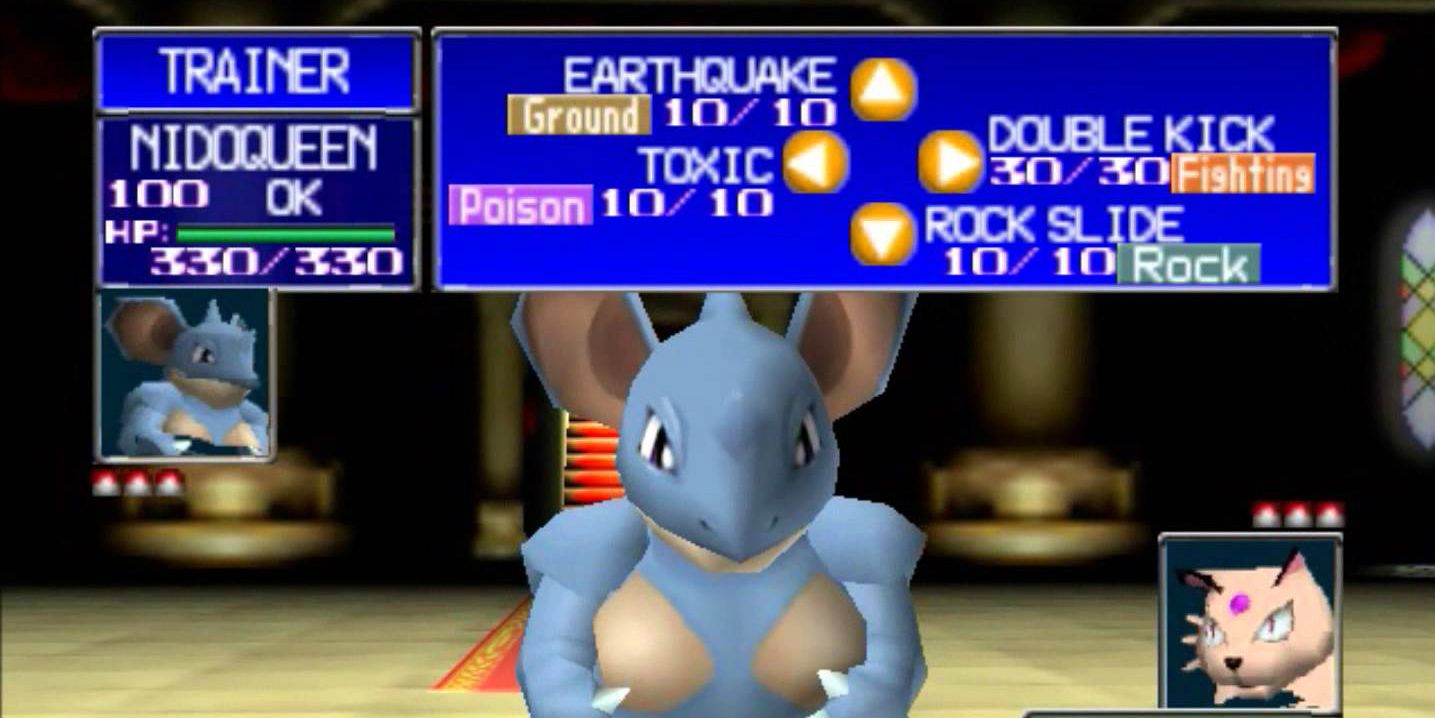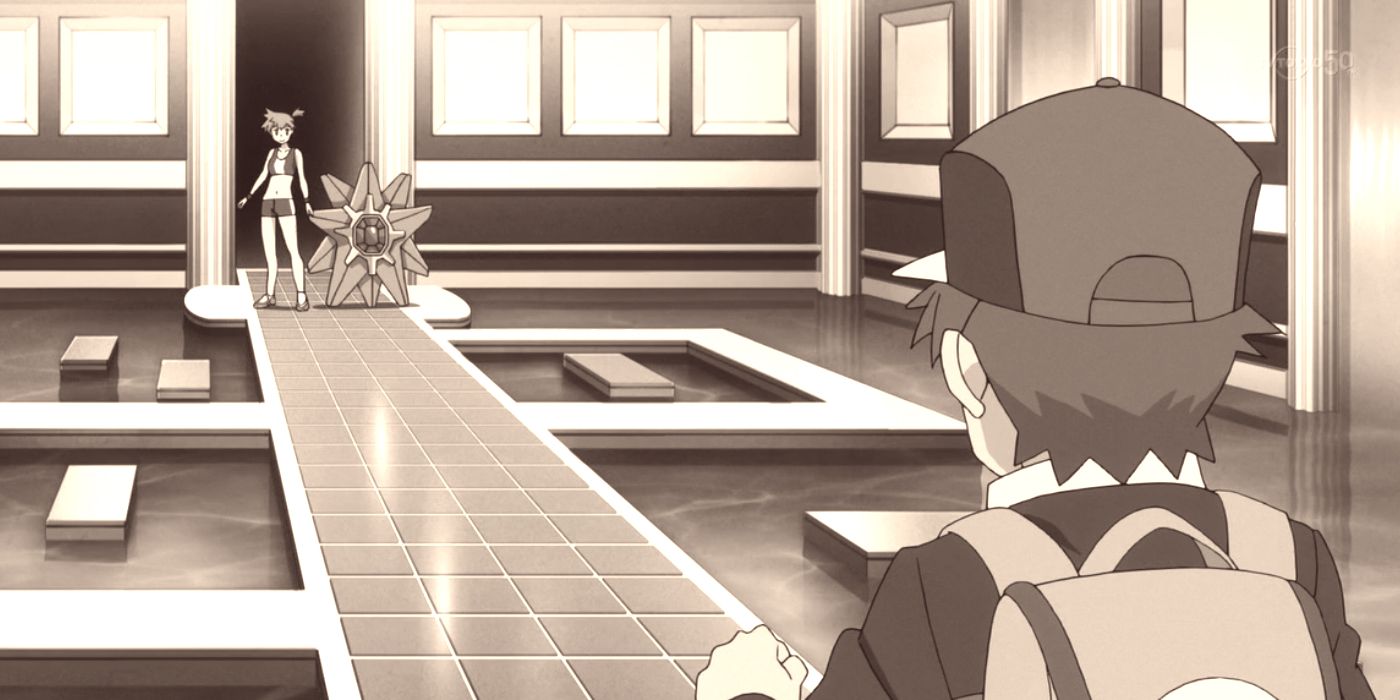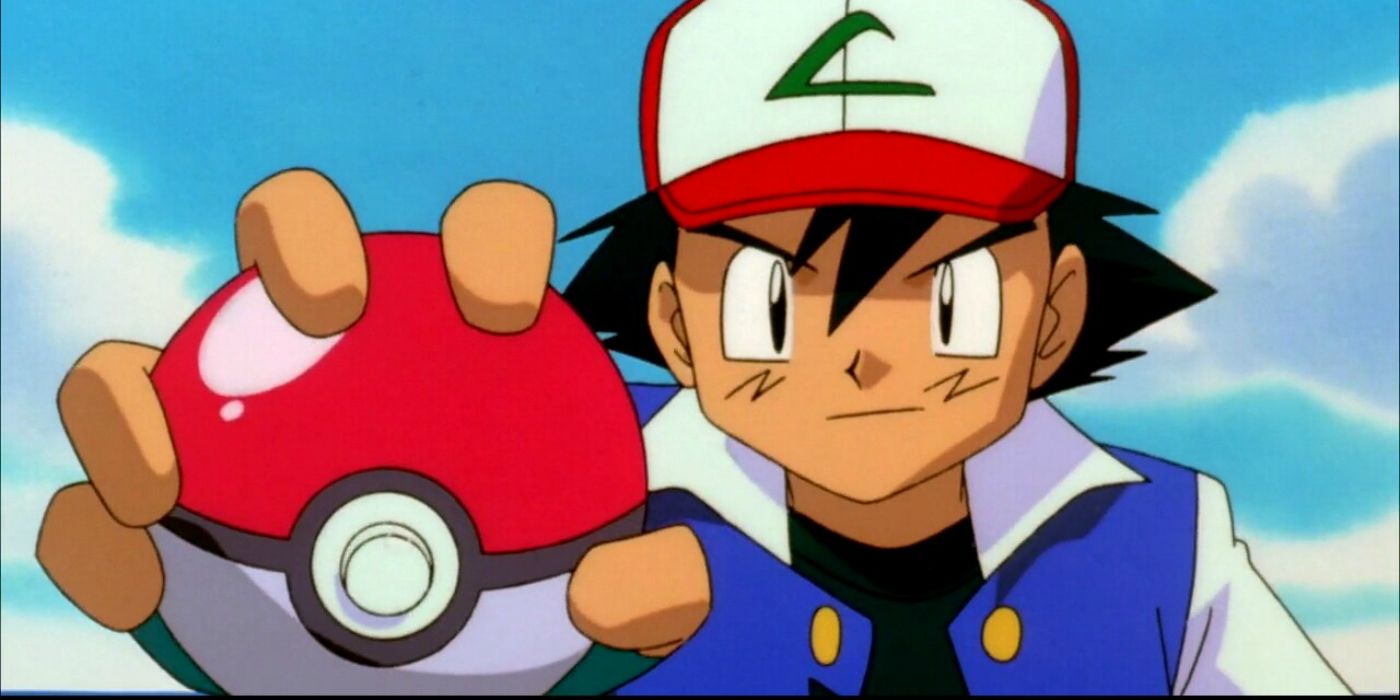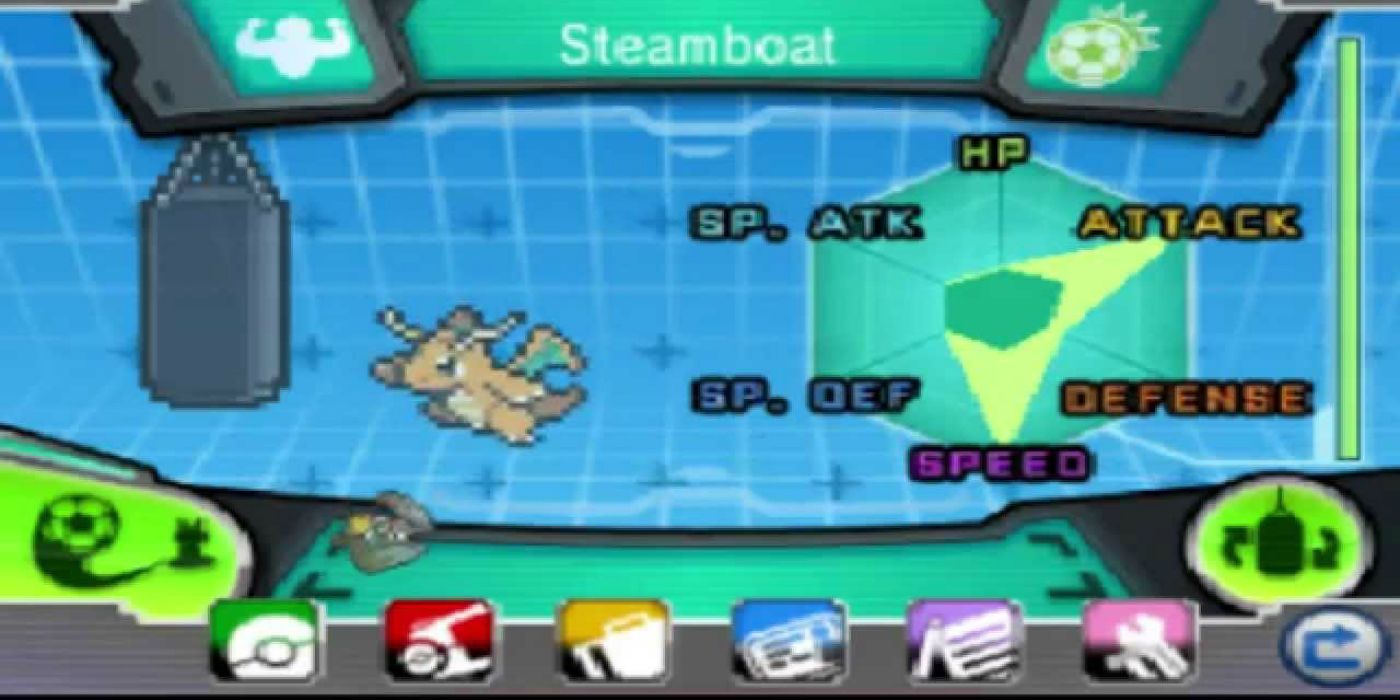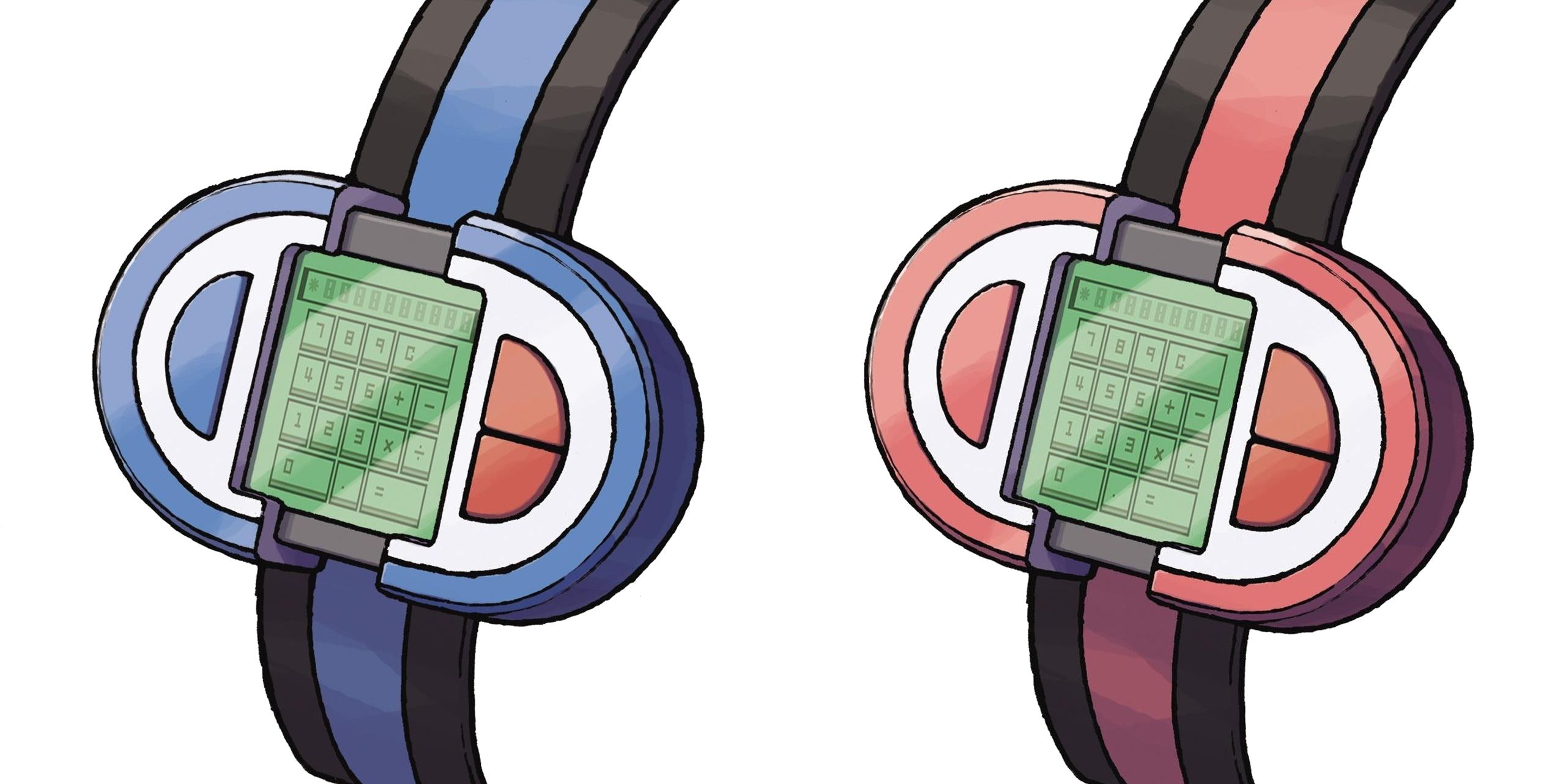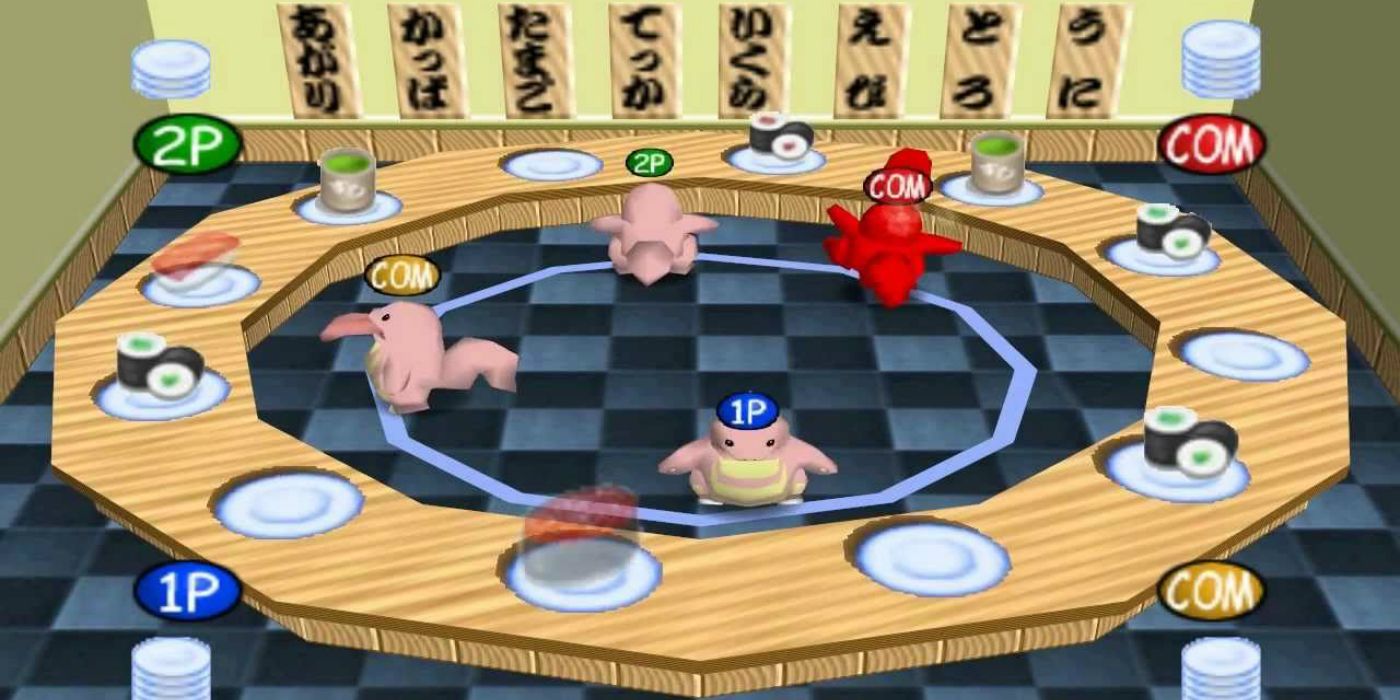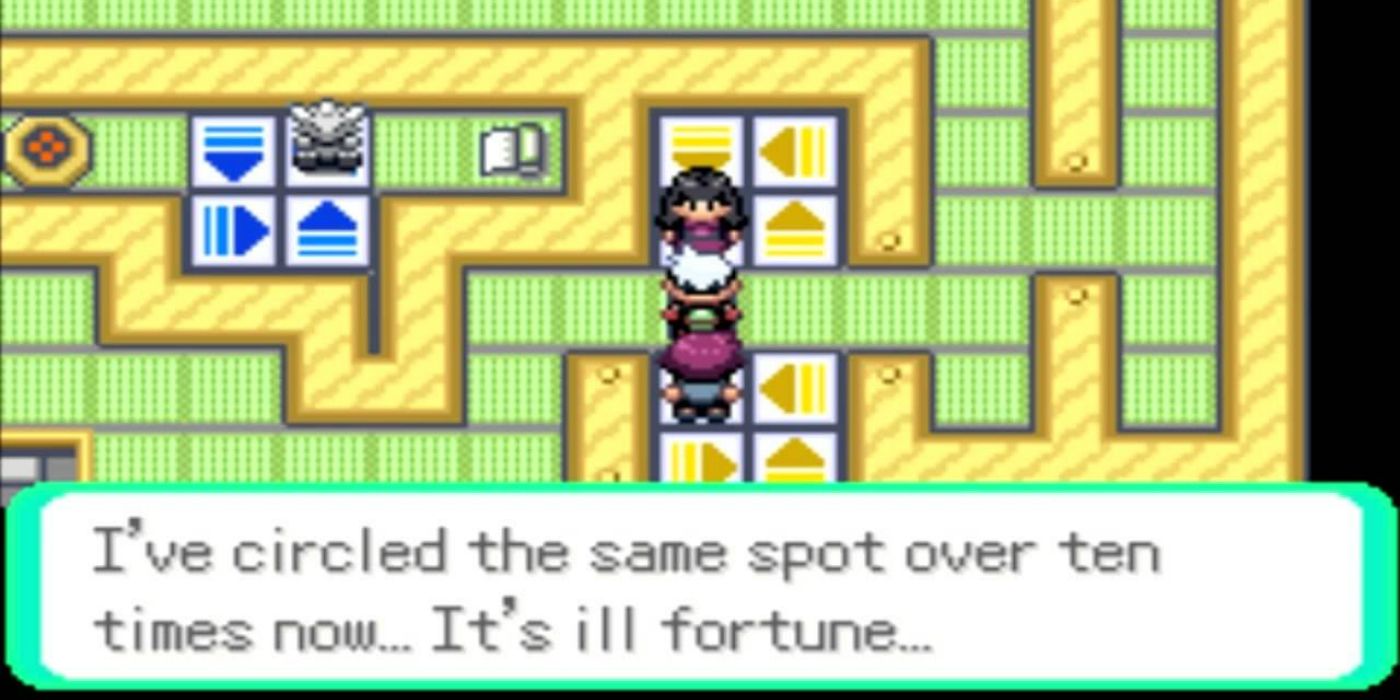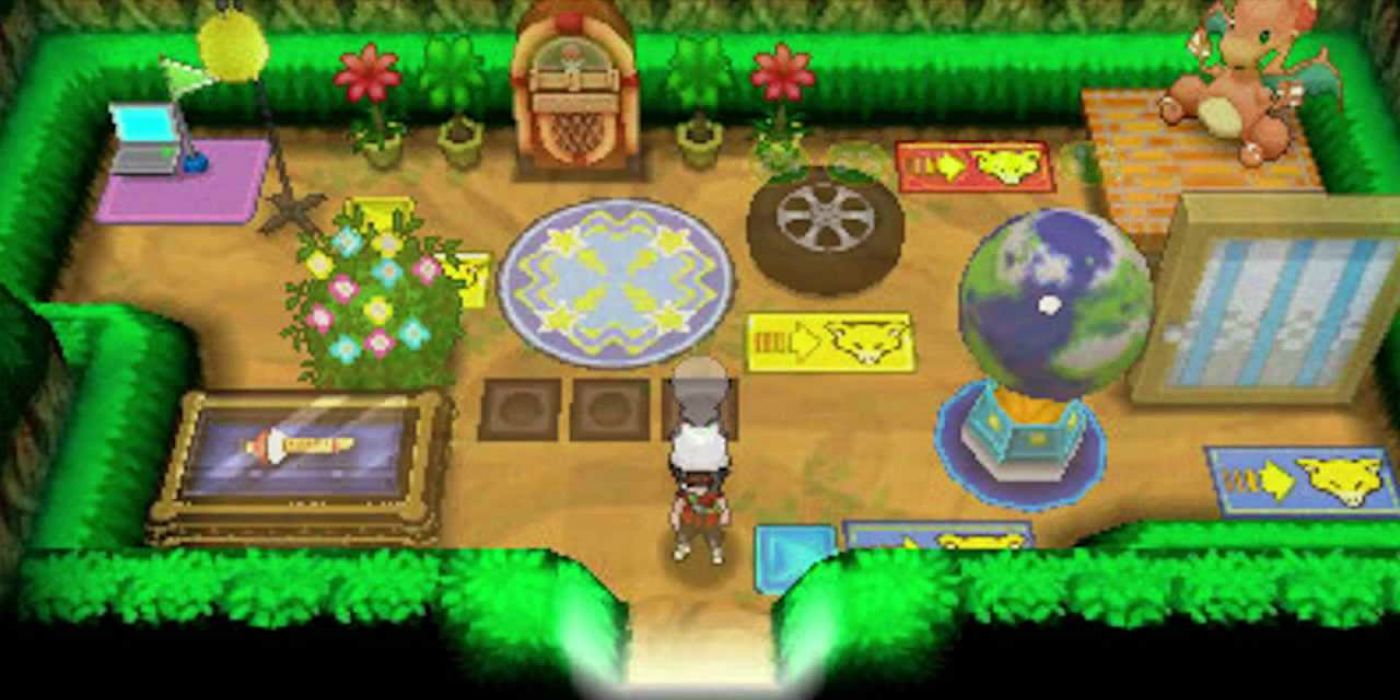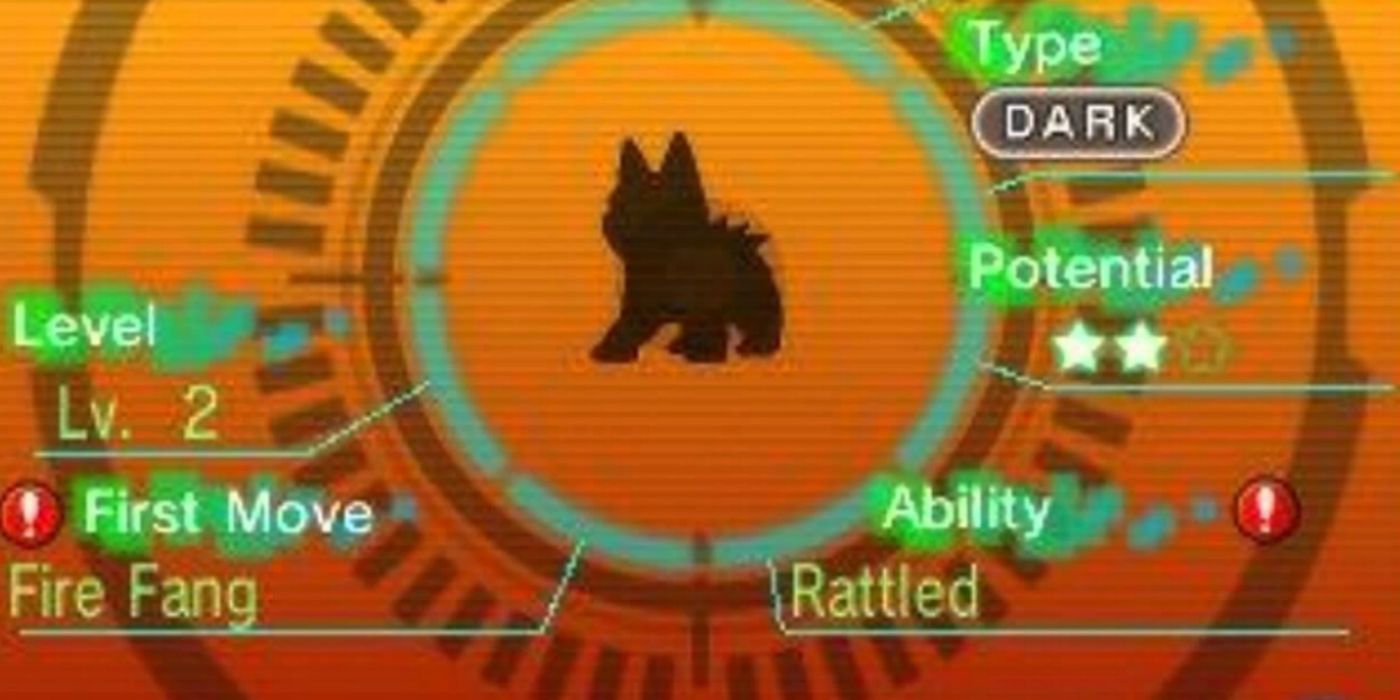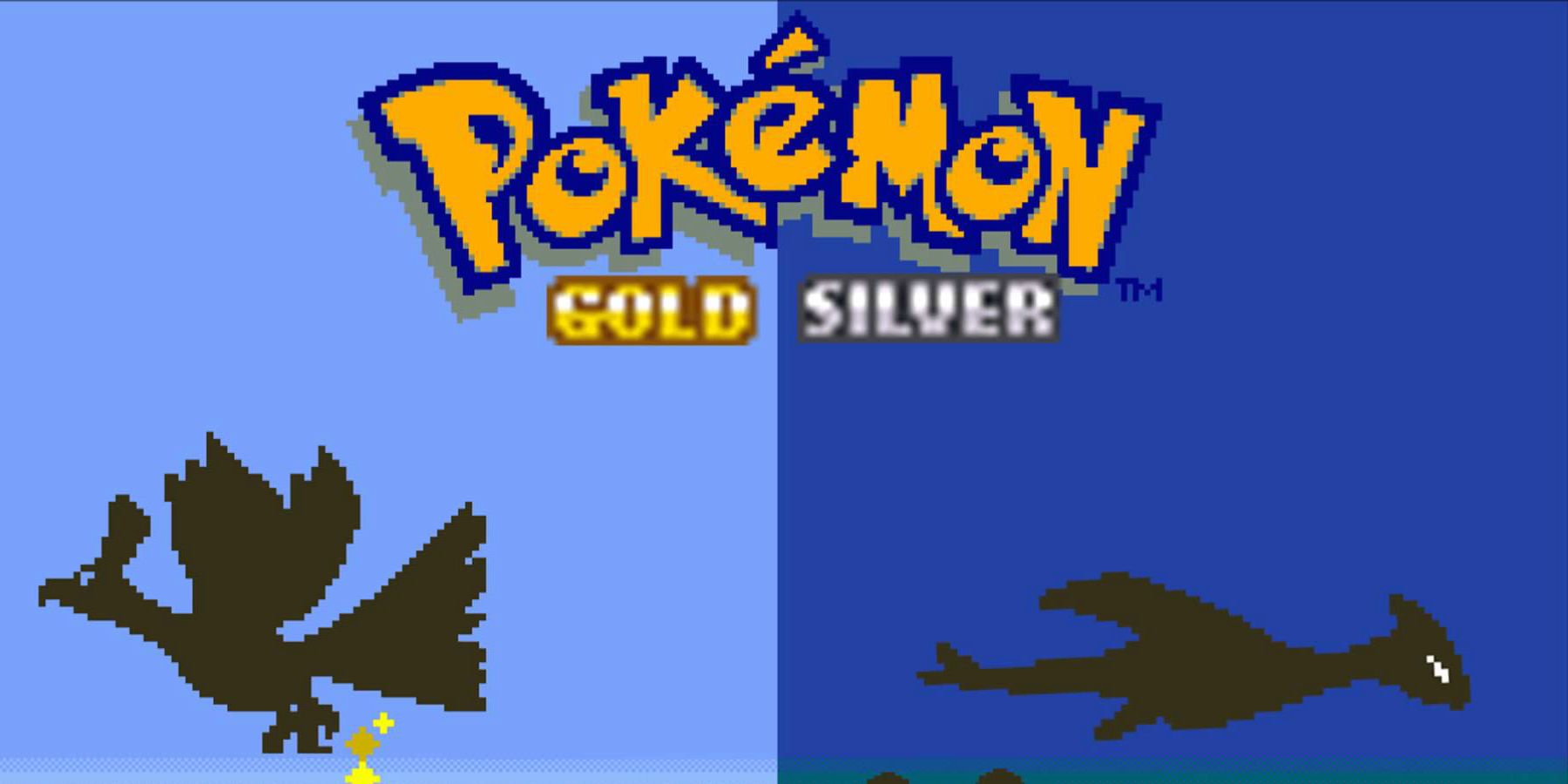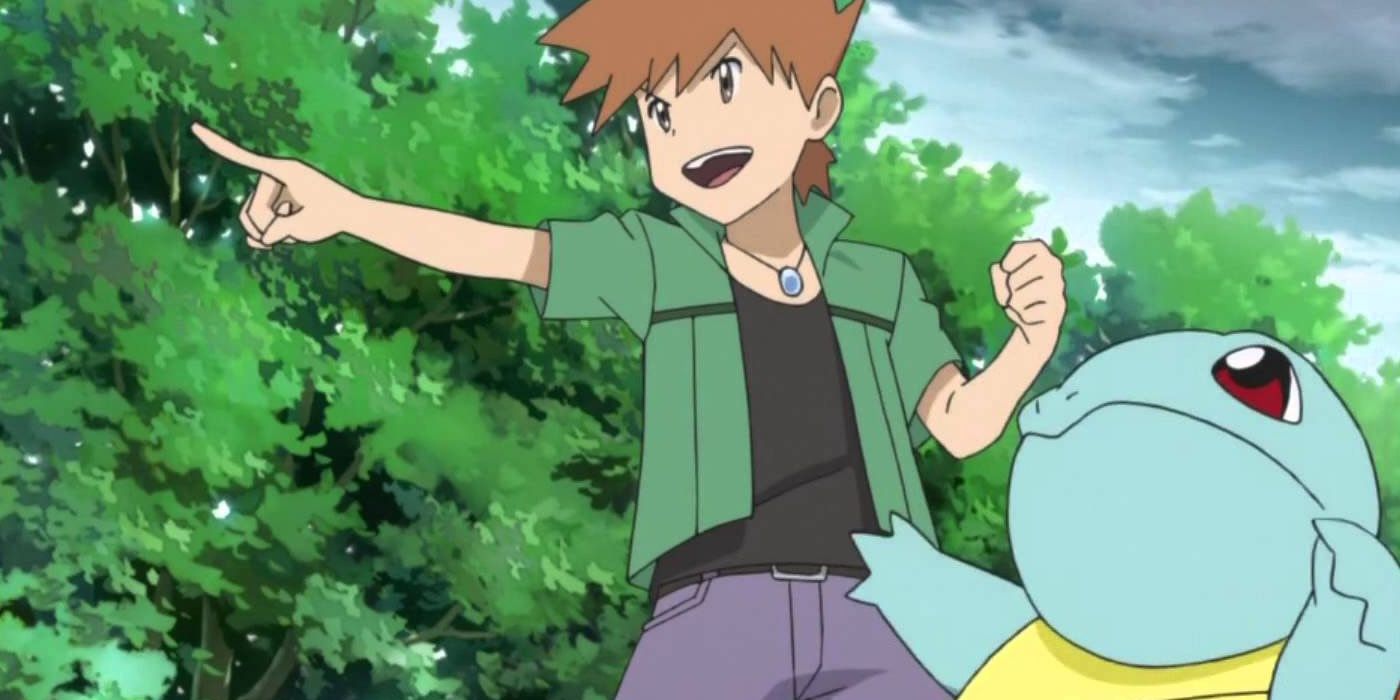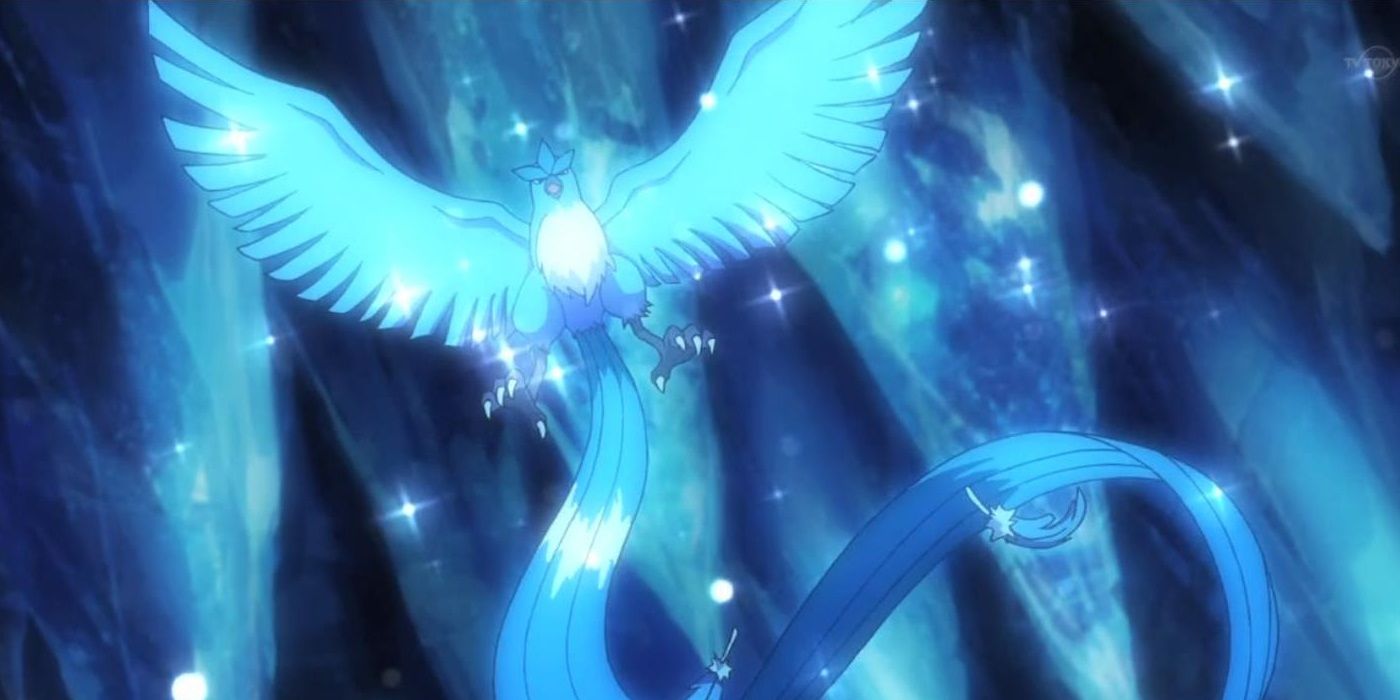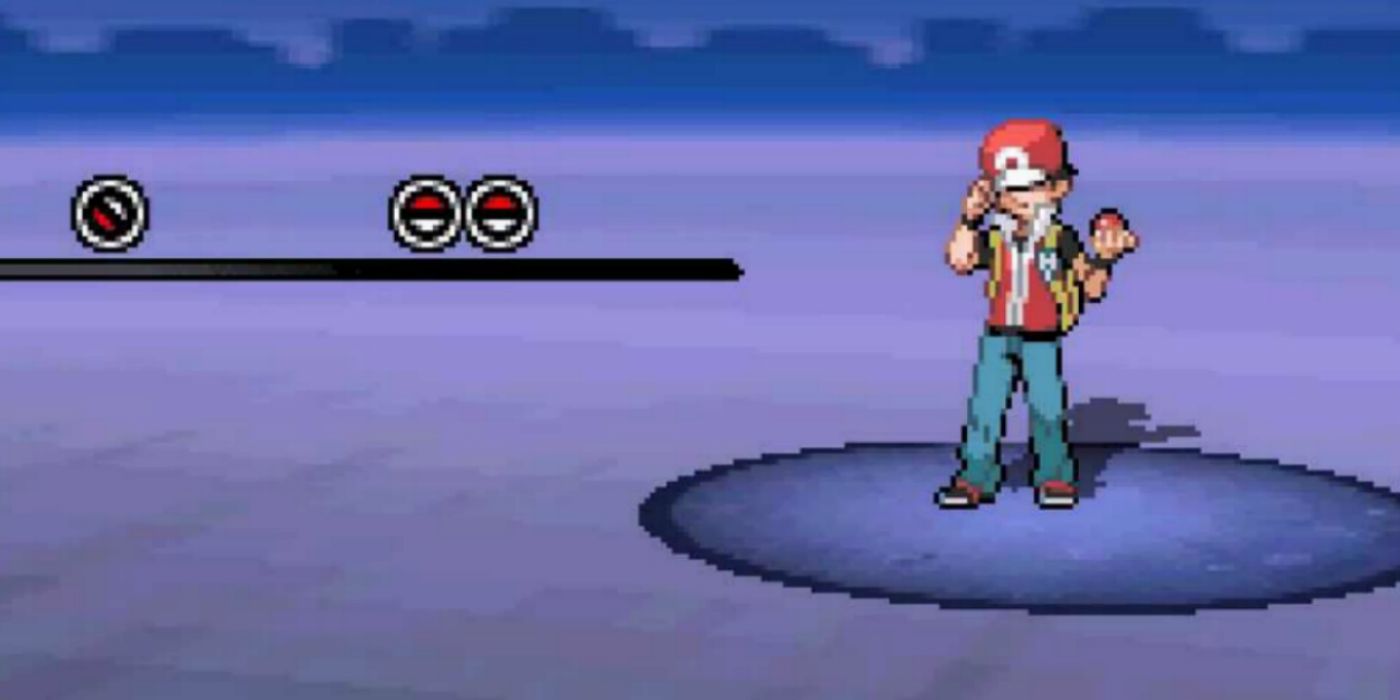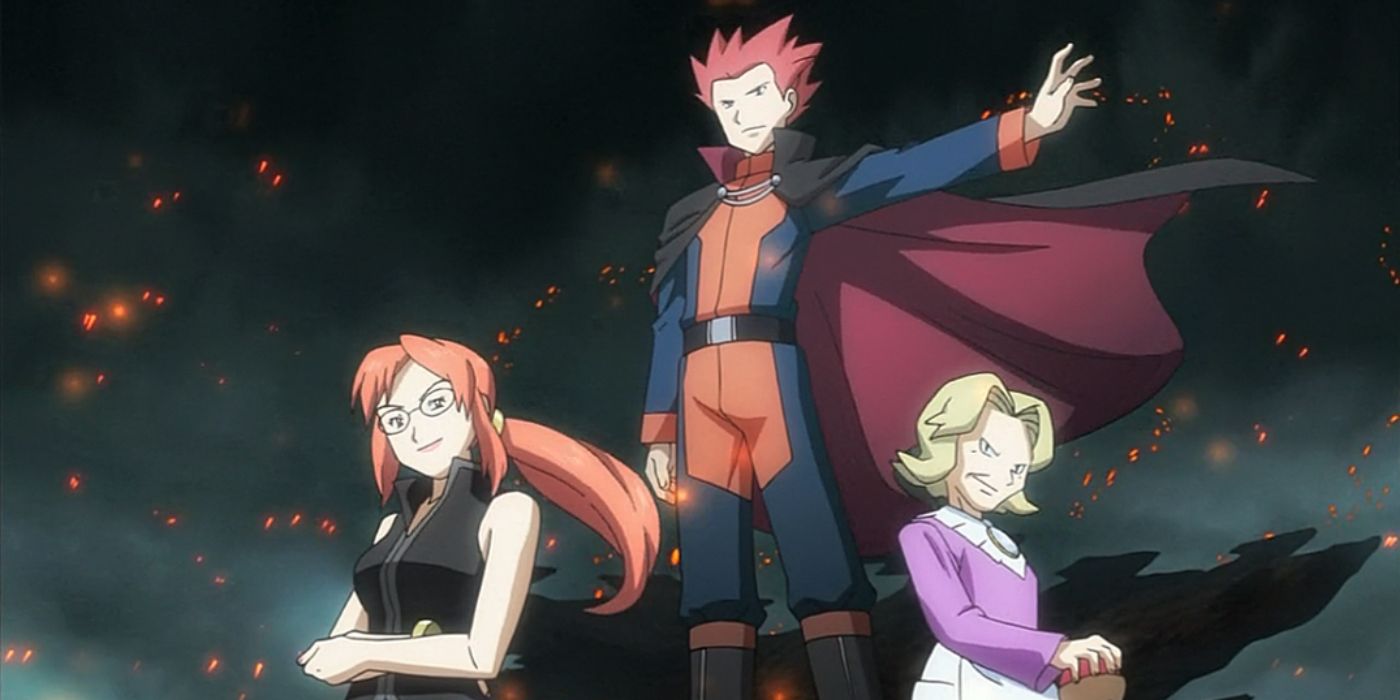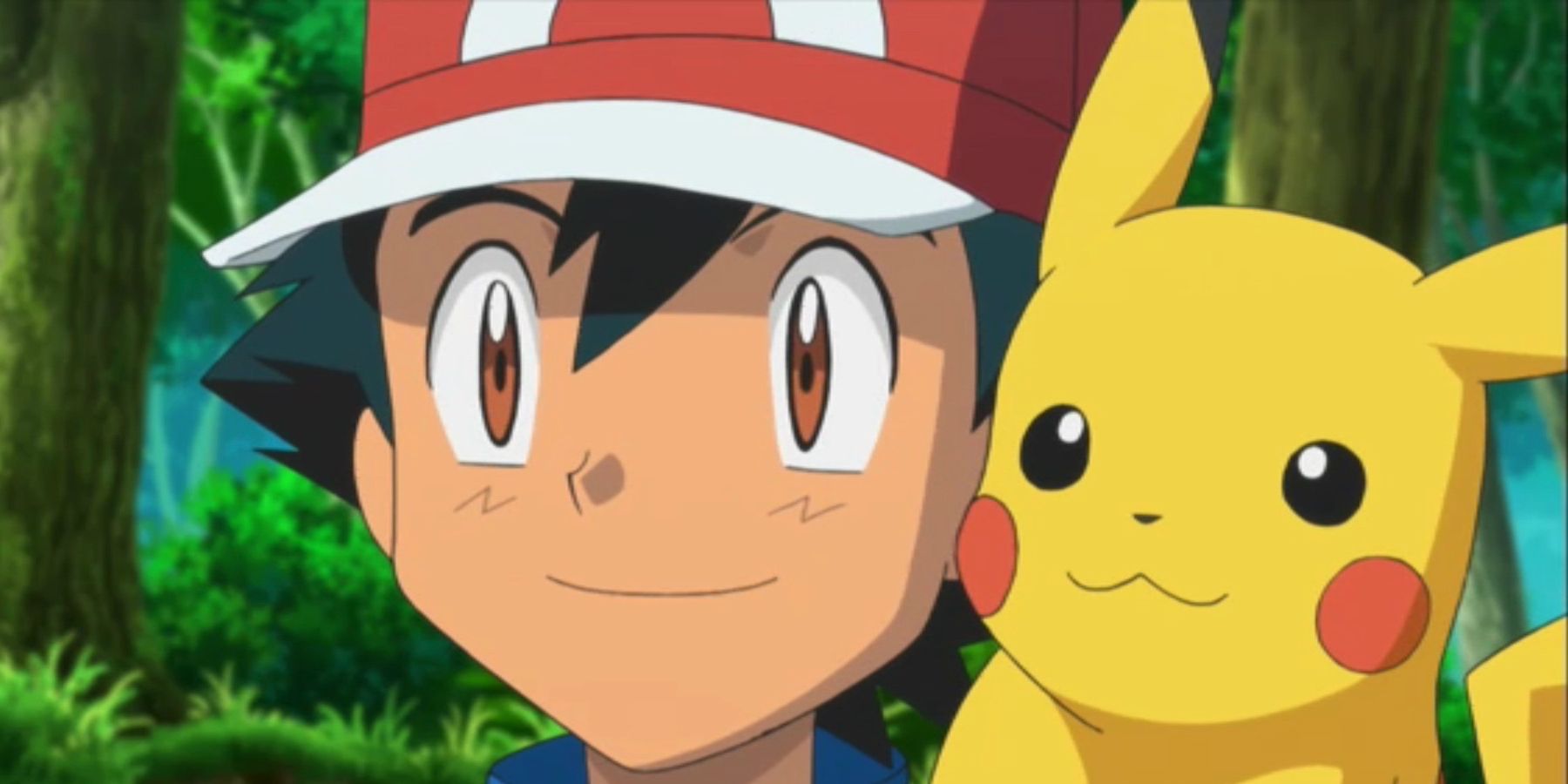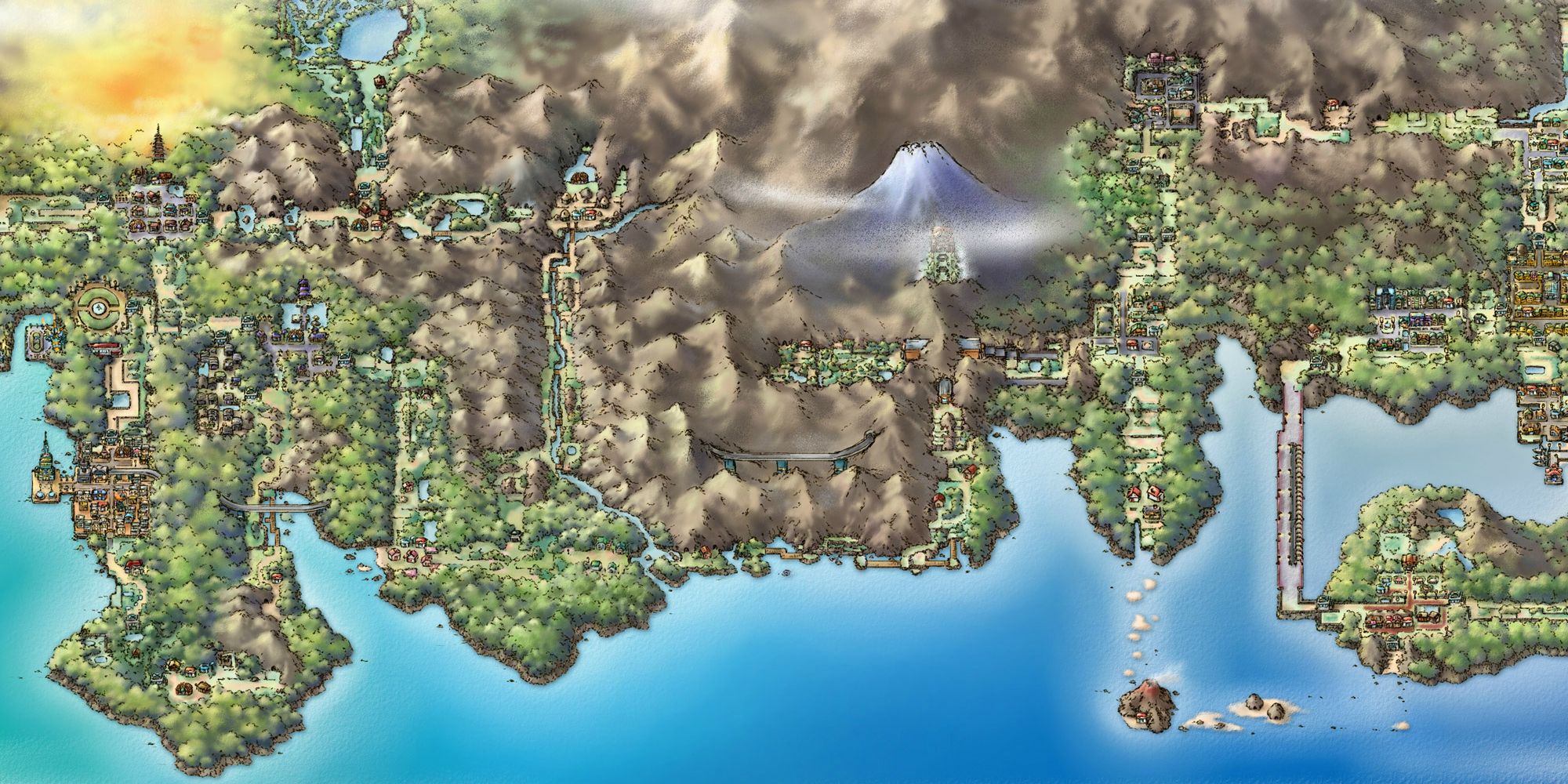One of the most discussed new features of the highly anticipated Pokémon Sun and Pokémon Moon technically isn’t new at all. The best-selling 3DS game is celebrating the 20th anniversary of the franchise (as well as the resurgent popularity of the original 151 pokémon thanks to Pokémon Go) with Alolan forms of first-generation pokémon--essentially, giving them new designs and typings and making finding the very first pokémon just as new and exciting as it was back when players picked up the series back on the Gameboy. This is a great example of how Nintendo and Game Freak can draw on the past of the series to make improvements for the future, but they definitely aren’t the only examples. Here are 16 Things From Older Pokémon Games That Sun And Moon Needs To Bring Back.
16. Pokémon Rental Teams (Pokémon Stadium)
The lowest entry on the list, we’re pleased to report that a version of this mechanic already exists in Sun and Moon thanks to the QR teams shown off in trailers. These teams--like the rentals of Pokémon Stadium are ideal for multiplayer, allowing trainers to form diverse, balanced teams to fight against their friends and adding some much-needed variety to matches that would otherwise be defined by what pokémon people actually have. The QR team system has the potential to be far more diverse than what Stadium’s teams were, which only had one moveset for every pokémon, but the tendency of pokémon players to completely write off certain pokémon in favor of “stronger” monsters could spell trouble. Hopefully the new games will ship with a few pre-made teams that ensure every monster is quickly and easily accessible for multiplayer battles.
15. Flashbacks when you start the game (Pokémon Firered and Leafgreen)
Appropriate for a list inspired by changes made to first-generation pokémon, the remakes of the original first-generation games added a small, but fascinating, touch: whenever a player would resume their saved game, a cute, black-and-white flashback would remind them of the last few things they did before leaving, like the quick recap before a new episode of a TV show. What could have been just a cute piece of atmosphere actually proved useful for players picking the game up after a long hiatus, giving a nice, organic reminder of what they needed to do to move the game forward--all in a quick, skippable format. The feature continued on in some of the 4th-generation games with journals and other flashbacks, but unfortunately died before the much more complicated games of the 5th and 6th generations. A comeback in Sun and Moon could not only be more helpful than in the simple Firered/Leafgreen, but the increased graphical prowess of the 3DS could add more subtle, interesting effects to the sequence.
14. Apricorns and poké ball crafting (Pokémon Gold and Silver)
Introduced alongside berries in Pokémon Gold and Silver, apricorns were a strange fruit players could gather throughout their journeys in Johto. If brought to Kurt the Poké Ball smith (and, yes, that is a real profession in the pokémon world) he could transform the apricorns into unique pokéballs that couldn’t be obtained any other way. Unfortunately, more than a few inconveniences held the concept back. In addition to requiring a full real-life day to pass before finishing the ball, Kurt’s balls just weren’t that useful. A ball that catches pokémon that evolve with moon stones, for example, sounds useful until you remember that only five families of pokémon need moonstones to evolve. Plus, in the original release of Gold and Silver, the modifier didn’t even work anyway! A new version of this mechanic should bring in a few ideas from modern crafting games. Let players design their own balls with custom modifiers, balancing powerful traits like better catch rates against high-level pokémon with rare ingredients and an expensive cost to manufacture.
13. Super training (Pokémon X and Y)
Aside from a massive graphical overhaul, Pokémon X and Y’s biggest addition to the series was its overall streamlining of the entire experience. Battling, training, and even the menus of the game are all easy and intuitive to understand, but possess just as much depth as the preceding games, if not more. Super training was one of the best examples of this, taking the bizarre, byzantine process of invisibly boosting a pokémon’s stats through raising effort values, or EVs, out of the shadows. Hardcore players loved the game providing a visible indicator of where EVs were at, while everyone enjoyed the choice of raising them through grinding, as before, or a fun soccer-inspired mini-game. Sun and Moon made waves when it announced hyper training, a method to raise a pokémon’s previously-unchangeable intrinsic values, or IVs. However, the game hasn’t shown off super training yet. While we’d be surprised if the feature was dropped after being so well received, that hasn’t stopped Sun and Moon from shaking things up in other ways, like dropping gyms from the game entirely.
12. Friendship detector (Pokémon Diamond and Pearl)
One baffling choice Pokémon X and Y made was the inclusion of Pokémon-Amie--a system for interacting with your pokémon that appears to be the basis for the grooming in Sun and Moon--without tying it to a pokémon’s friendship level. While it’s quick and easy to see how much affection your pokémon has thanks to Pokémon Amie, their friendship level, which determines when pokémon like Chansey, Eevee, and Golbat evolve, remains unknown unless you take the pokémon to a specific NPC. What makes this especially baffling is that the problem was already solved in Pokémon Diamond and Pearl, when players had an application on their Pokémon Watch (bafflingly abbreviated to Pokétch) that would instantly show their pokémon’s friendship levels in a cute, Gameboy-inspired pixelated display. Making it unnecessary to travel back to distant towns and people to learn this information would be a big step forward for Sun and Moon.
11. Fun minigames (Pokémon Stadium)
Between new all-for-one pokémon battles, the aforementioned QR teams, and a fun online hub to explore, Pokémon Sun and Moon seems to be explaining the lack of a Pokémon Stadium-esque game on the Wii U or 3DS--it’s filling a lot of the same roles those games would on its own! Something that might put the game truly over the top in this regard would be its own suite of surprisingly fun, well-developed minigames, which Pokémon Stadium boasted in spades. If there was even one game with the same bizarrely strategic fun of, say, Sushi-Go-Round, or the manic energy of Barrier Ball, that would be a huge addition to an already fully-fledged Pokémon game.
10. A sequel or successor to the Trick House (Pokémon Ruby and Sapphire)
One of the more underrated features of the third generation of pokémon, the Trick House allowed players to earn various rewards by battling trainers and solving fun, simple puzzles. Perhaps best of all about the Trick House was its multiple iterations--as players came back throughout their adventure, the house would periodically update itself with new trainers, new puzzles, and new rewards. While the Trick House itself coming back would be great, really anything with battling, puzzles, or rewards that changes and grows throughout the player’s journey would be welcome in Sun and Moon. Especially if it lets players encounter it relatively early in the game!
9. Secret bases (Pokémon Ruby and Sapphire)
For a game series revolving around characters leaving home and setting out on their own, pokémon protagonists have a surprising lack of housing options. While the anime suggests that trainers bring camping equipment with them for stays in the woods, or simply sleep in pokémon center, the only hint of a solution to this potential homelessness crisis in the making that the games themselves present is in the form of secret bases. Introduced in Ruby and Sapphire, secret bases provide a fun place for you to relax in, as well as display posters, dolls, and more--in the remakes Omega Ruby and Alpha Sapphire, the games even let you turn the bases into miniature gyms! Unfortunately, Nintendo has made a point to make sure the mechanic doesn't leave Hoenn, but that doesn’t mean that they wouldn’t make for a great edition to Sun and Moon.
8. Pokémon sneaking and DexNav (Pokémon Omega Ruby and Alpha Sapphire)
Sneaking by differentiating between small nudges on the 3DS circle pad already added a fun element to the 3DS remakes of Ruby and Sapphire, but this change became truly great in conjunction with the DexNav. In addition to quickly showing players which pokémon they have and haven’t caught in an area, the DexNav let you plan specific encounters with pokémon by sneaking up on them. This gave the player a very visceral sense of revenge against wild pokémon by letting them plan the random encounters for a change, but repeated encounters with the same type of pokémon yielded other rewards, including the ability to see a pokémon’s moves, abilities, and even hints of their IVs beforehand. While a few screenshots indicate there’s some version of this in Sun and Moon with icons for encounters in specific areas, we haven’t seen any hints of the sophisticated screening methods introduced in ORAS. Abandoning this mechanic would be a big step backwards for the series, and make assembling formidable, competitive teams that much more difficult.
7. Daily and weekly events (Pokémon Gold and Silver)
Taking advantage of better hardware, Pokémon Gold and Silver used an internal clock to create the sense that the world didn’t start and stop existing whenever you played. Many of the games have had day/night cycles that affect which pokémon you can encounter, but few took it as far as Gold and Silver did, which had various events, services, and NPCs that you could only encounter at certain times of the day or certain days of the week. Learning when to show up for the bug-catching competition, or which day to take your pokémon to get a haircut in the subway (yes, that was a thing) made the player feel like they were part of something that was organic and alive. With its own emphasis on the difference between day and night, hopefully Pokémon Sun and Moon will bring this concept back from an unusually long slumber.
6. A real rival (Pokémon Red and Blue)
Ever since the happy rivals of Pokémon Ruby and Sapphire, every major rival to the player has been positioned as at the very least sympathetic, if not a childhood or newfound friend. In a certain sense, this is better writing, as it more closely mirrors actual human relationships. In terms of how it affects the game, however, the change is hugely negative--part of the satisfaction of fighting the smug jerk from Pokémon Red and Blue, and the cold, cruel thief from Pokémon Gold and Silver was that both characters were so cartoonishly hateable, and both reacted in a very petulant way, making you feel like you’d struck a blow against an antagonist. This role has been all the more important as the opposing teams in pokémon games grow less and less interesting, and while all indicators seem to suggest that your main rival in Sun and Moon is yet another friendly, affable trainer, bringing back the more easily hateable foils from the early games would provide a huge boost to Sun and Moon’s already astronomical popularity.
5. A freeform approach to legendaries (Pokémon Red and Blue)
Finding a legendary pokémon in Pokémon Red and Blue truly felt like something special, and not just because nobody knew as much about the concept. In addition to legendaries being much scarcer overall, with just five pokémon of the original 151 meeting the standard criteria of a legendary, players weren’t constantly inundated with characters in-game telling them how awesome they were. All you got were hints that there was something interesting in a cave or abandoned power plant, and after some exploring, you’d be surprised and rewarded with a legendary pokémon. Gold and Silver managed to keep this up despite a stronger inclusion of the legendaries in marketing, with players simply being nudged towards where the legendaries are rather than forced to fight them. Unfortunately, every game since Ruby and Sapphire has made encountering the legendaries something that always happens in the story, with games in the fifth and sixth generation practically forcing you to capture the pokémon on your first attempt. This approach completely devalues the once powerful experience of discovering a rare new pokémon, and hopefully Sun and Moon makes finding these monsters at least a little more organic.
4. A true final boss (Pokémon Gold and Silver)
Unlike other RPGs, Pokémon doesn’t really have much in the way of conventional boss fights, with the closest being gym battles and the challenge of the Elite Four. One game, however, went above and beyond, offering a fight that truly tested everything you’d learned over the course of the game--the fight against Red, or your own character from the past games, in Pokémon Gold and Silver. In addition to making the game’s worlds feel more interconnected and alive, this fight pit you against a well-trained, high-level pokémon team, with great type coverage and an amazing moveset. The fight got even better in the remakes of Gold and Silver, which actually made the hardest fight in pokémon even harder. Red is already confirmed to appear in the Alola region. Hopefully he’ll bring his A-game with him.
3. Re-fighting trainers, gym leaders, and the Elite Four (Pokémon Gold and Silver, Pokémon Black and White)
If one criticism could be leveled against Pokémon X and Y, it would be the game’s total inability to battle trainers you’d previously fought. In addition to making the endgame much more static and boring than in previous entries, X and Y’s baffling decision made the world feel less alive than in past games. Best used in Pokémon Gold and Silver and Pokémon Black and White, fighting against past opponents gave you a sense of time passing, as old foes grew more powerful and acquired better, more menacing pokémon. This is especially true with Pokémon Black and White, whose Elite Four were significantly more formidable the second time around. Sun and Moon’s marketing focuses on drawing players into a rich, exciting new world, and there wouldn’t be many better ways to do that then to show that other trainers trained and improved as well.
2. Having pokémon outside of their pokéballs (Pokémon Heartgold and Soulsilver)
If there’s one thing decades of watching Ash and his Pikachu travel the world in the Pokémon anime, it’s that some pokémon just hate being inside of pokéballs. This was a big part of the reason why Heartgold and Soulsilver’s mechanic of allowing pokémon to follow players outside of their pokéballs was such a beloved one--it felt good to see your friends outside and getting some fresh air, and even better to watch them react to changes in the weather, location, and their health. Unfortunately, there are some valid logistical concerns with bringing this back in Pokémon Sun and Moon’s much more detailed, complex 3D art style--every pokémon model would take much more time to produce than the simplistic sprites of Heartgold and Soulsilver, and depending on how many pokémon Sun and Moon introduces there could be nearly twice as many pokémon as the re-releases of Gold and Silver. But trailers, screenshots, and features like the Poké Finder showcase an unusual amount of pokémon present in the overworld. Could Nintendo be testing the waters for bringing this feature back in a future release? Only time will tell.
1. Multiple regions (Pokémon Gold and Silver)
One of the strongest moments in Pokémon Gold and Silver was working your way through the eight gyms and defeating the Elite Four... only to discover that Kanto, the region from Pokémon Red and Blue, was open for exploration, with new pokémon, new trainers, and eight more gym leaders to fight! It was thrilling to see the length of the game double before your eyes, and although the twist isn’t quite as much of a magic trick as it seems--the difficulty curve leading up to the Elite Four is bizarrely low, and direct comparisons to Pokémon Red and Blue’s map reveal that Gold and Silver’s Kanto is significantly smaller--it still made the game feel much larger than any game that’s come before or since. Letting you revisit a past region, with its own non-linear gym challenge, also let you admire how the world had changed in the three years since the events of Pokémon Red and Blue, further making the world feel alive. Unfortunately, no game since has had such an ambitious postgame, with sequels settling for either some sort of battling facility or simply offering nothing at all. With everything we know about the structure of Sun and Moon, revealing that a significant portion of the game takes place in a completely new place would be the biggest twist in a pokémon game in years, and could help cement Sun and Moon as one of the all-time best games in the series.


